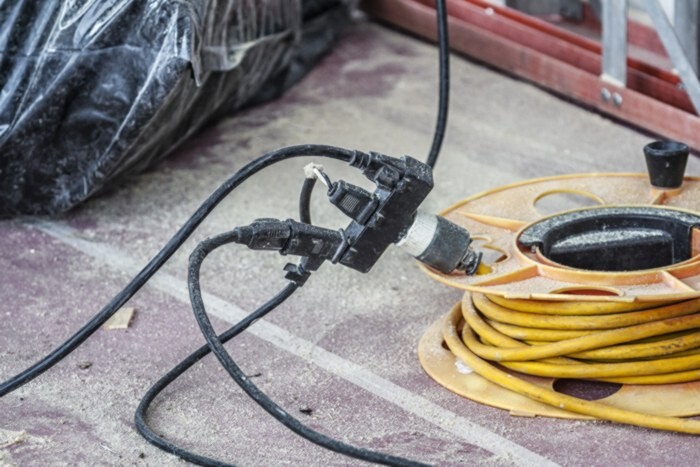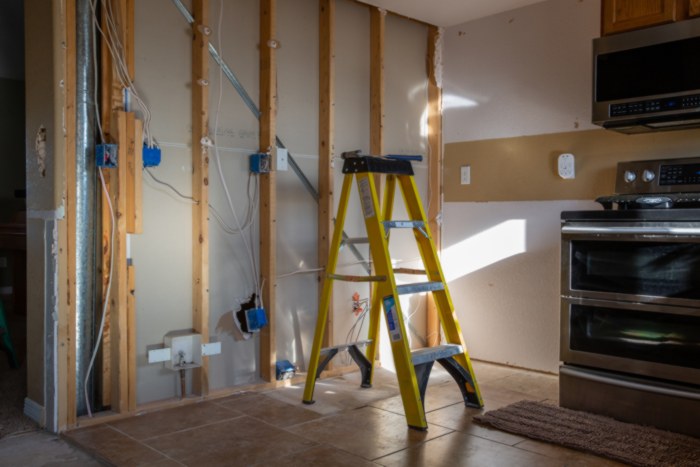 The use of electric tools and machines on building sites is a necessary part of any construction project. Electrically powered tools reduce the burden of work on labourers and specialist workers, allowing for fast and precise completion of arduous tasks: from mixing cement to sawing, breaking and drilling.
The use of electric tools and machines on building sites is a necessary part of any construction project. Electrically powered tools reduce the burden of work on labourers and specialist workers, allowing for fast and precise completion of arduous tasks: from mixing cement to sawing, breaking and drilling.
Unfortunately, the use of these power tools and other electrical equipment on construction sites is not without risks. Serious hazards can accompany the use of these tools, these include:
- Risk of electrocution
- Risk of burns
- Risk of fire
Basic precautions for electrical safety on construction sites
There are a number of HSE regulations surrounding electrical equipment safety. Although many of these safety measures may seem obvious to most people, it’s important to remember that not everyone need necessarily be aware of the threats of working with this type of equipment and under what conditions hazards may be potentiated. It is also worth noting that, like all workers, machine operators may become overconfident due to working with certain tools regularly, and that safety standards can slip.
The key points to remember are to avoid coming into contact with the electrical current passing through the machine. This could be the direct contact caused by touching an exposed wire or indirect contact, when the current running through the machine comes into contact with a conductive substance or material (such as water). The electrical current running through the machine is kept isolated from the outside world by insulating materials (such as rubber), and it is key to ensure that these materials are in good condition before operating this equipment. Three clear principles to keep in mind when operating any type of electric equipment are:
- Ensure that all electrical equipment looks visibly intact, paying special attention to wires and plugs.
- Keep electrical equipment away from moisture.
- Disconnect electrical equipment from the power source when not in use.
Minimising the risks of electrical accidents on construction sites
If you are planning on utilising electric equipment on your site, it is good practice to carry out a risk assessment to identify any potential hazards that could arise from the use of said equipment. After listing these hazards, you will be able to decide on the control measures to be used in each case. There are a number of steps you can carry out before, during and after machine use to ensure electrical equipment safety on your site. These include:
 BEFORE
BEFORE
Before using any electric equipment, always check the following points:
- Ensure that correct training has been provided to whoever will be using the machine.
- Ensure that this person has been provided with the correct PPE.
- Check that the equipment to be used is appropriate for the proposed task.
- Check that the electrical equipment is in good condition.
- Ensure environmental conditions are appropriate for machine use.
Some work with electric machines may be carried out in special environments, such as inside metal tanks (conductive environment with restrictive movement - see BS7671 'Requirements for Electrical Installations', IEE Wiring Regulations, Seventeenth edition, Section 706) or in locations containing flammable gases, dusts or vapours (explosive atmospheres). In these cases special regulations will apply.
DURING
The following advice should be followed during the operation of electric equipment on a site:
- Inspect regularly: Look for signs of damage before use, but also at intervals during use as power cords and other machine parts can become damaged during operation.
- Keep an eye on the environment: If working outside, watch out for changes in weather and lighting conditions. Also try to keep your immediate work area clear and unobstructed to avoid additional risk of tripping, or inadvertent machine sparks igniting nearby debris.
- Use the correct power sources, adapters and extension cords: Ensure that all accessories and power sources you use with your machine are in good condition and are the correct voltage. Make sure extension cords are the correct length and do not overload them by plugging in too many machines at once.
- Ensure all equipment is grounded and use circuit breakers.
- Turn off power or disconnect from source when changing accessories: Always turn off your machines when changing drill bits, sandpaper, blades or other accessories.
AFTER
After your task has been completed, follow these simple rules to ensure maximum safety:
- Disconnect your equipment from the power source when you have finished using it. As well as reducing the risk of electrical accidents, this will eliminate the risk of accidents caused by anyone tripping over the power cord.
- Inspect the equipment you have used for any signs of damage. Damage can have occurred at any point during operation; even unplugging a machine can loosen the wires in the plug. Thoroughly inspect your equipment when you have finished using it.
- Store away immediately. When you have checked your equipment, store it away immediately. Machines left lying around can pose a hazard to workers and may incur damage. Reduce this risk by storing equipment away when not in use.
If you are interested in hiring high-quality power tools or construction equipment for your next project, speak to Paragon Hire today. We stock an ample range of construction equipment and all of our tools and machines are thoroughly checked between hires to ensure maximum electrical equipment safety for our clients. Get in touch with our friendly team today by calling 01280 822 282. We will be more than happy to answer any questions you may have.
Resources:
https://www.hse.gov.uk/electricity/electricequip.htm
https://www.hse.gov.uk/electricity/explosive.htm
